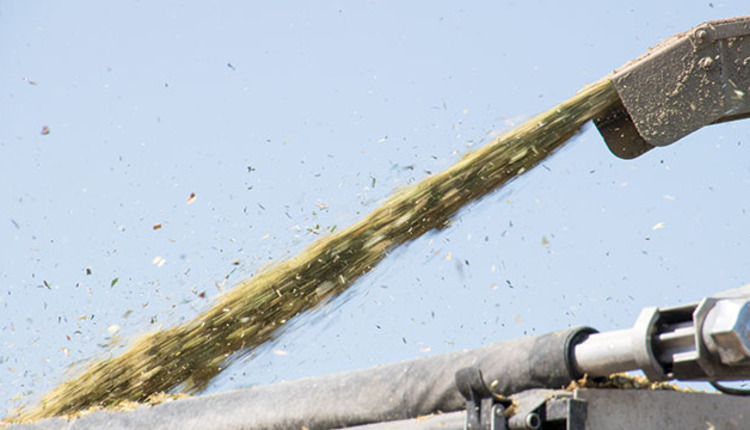
Corn silage kernel processing score (KPS) continues along with brown midrib (BMR) corn silage and politics as the most heated topics discussed among forage growers, dairy producers, and consultants. During the KPS analysis, your forage lab checks what percentage of corn silage starch (within the grain and kernels) is smaller than 4.75 millimeters (mm) in size, which is roughly the diameter of a .22 caliber bullet. Or more simply put, KPS determines how crushed up the kernels are.
The aim in corn silage processing is for near complete kernel destruction, or a KPS greater than 70 to 75. Ultimately, starch digestion, animal performance, and dairy or feedlot profitability are related to grain particle size. Just nicking or breaking the kernel is no longer adequate because researchers have determined that rumen bacteria cannot access starch if the kernel is not completely opened up.
Strive for kernel breakage
In the equipment world, implement manufacturers advance at a rapid pace, developing kernel processors that are dramatically different from those of years past. Randy Shaver with the University of Wisconsin has recently used the term “contemporary processors” to identify alternative kernel processors that operate with a greater roll speed differential and different rolls relative to conventional kernel processors.
With the advent of contemporary processors, KPS has re-emerged as a focal point to assess processor efficacy. Further, many are taking KPS measures during harvest and using the results to make decisions relating to roll gap or differential speed. In using KPS with freshly chopped forage, understand that the KPS value will elevate 5 to 10 units over time once it is ensiled, so set your goals accordingly. If your feedout goal is 70 or better KPS, a realistic fresh-chopped forage KPS goal may be 60 to 65.
In the research community, Shaver has suggested that the main benefit to contemporary processing is improved kernel breakage and starch digestion. Luiz Ferraretto, University of Florida dairy scientist, has also recently addressed the popular question from the field, “Do contemporary processed corn silages pack and store as well as conventional?”
Ferraretto has found that contemporary processors were associated with a better kernel processing score but also found equivalent fermentation results in research conducted with Keith Bryan (Chr. Hansen) and our team at Rock River Labs. Future research may continue investigating the KPS relationship with rumen starch digestion or evaluate seed corn genetics relationship with KPS.
Berry Processing Score
Beyond corn silage KPS, another silage grain processing score has been developed for sorghum and other tropical grasses that yield berries (or grain). Sorghum or milo may contain 25 to 30 percent starch in the berries, potentially contributing substantial energy to the forage for milk production or gains. The energy available in sorghum starch is often not recognized because the grain in these silages is very hard and poorly digested if not processed. Screening manure from cattle consuming sorghum silage often uncovers many whole berries that the animal wasn’t able to digest. Hence, understanding processing is important to maximize forage energy value; however, the corn silage KPS is not appropriate.
Kansas State University’s Jared Johnson and Mike Brouk recognized that the 4.75 mm threshold for KPS is far too large for sorghum and other small grain silages with small berries. They have worked to develop an alternative — the Berry Processing Score (BPS). The researchers recently shared their initial research findings during the 2017 American Dairy Science Association annual meeting in Pittsburgh.
Johnson’s research found that a 1.7 mm threshold could differentiate acceptable from poor-quality sorghum processing. Johnson suggested the BPS goal should be 50, meaning that 50 percent of the starch is smaller than 1.7mm. Further, Johnson found that BPS was significantly related to rumen in situ starch digestion, with greater BPS corresponding to better rumen starch digestion. The unprocessed sorghum silage had 50 percent starch digestion, whereas the silage that reached over 50 percent BPS had 80 percent starch digestion.
These BPS and starch digestion results could mean 2 pounds of milk per cow or more if sorghum silage is fed in equal amounts to corn silage in a high-forage diet. Consider benchmarking your sorghum to understand the potential production gains.
For both corn silage or sorghum and other small grain silages, strive for greater than 70 or 50 with KPS or BPS, respectively. Work with your nutritionist and harvest decision-making team in using the newly understood KPS and BPS relationships to determine if processor adjustments, or a contemporary processor, would be an economically sound decision for your business.
This article appeared in the August/September 2017 issue of Hay & Forage Grower on page 28.
Not a subscriber? Click to get the print magazine

